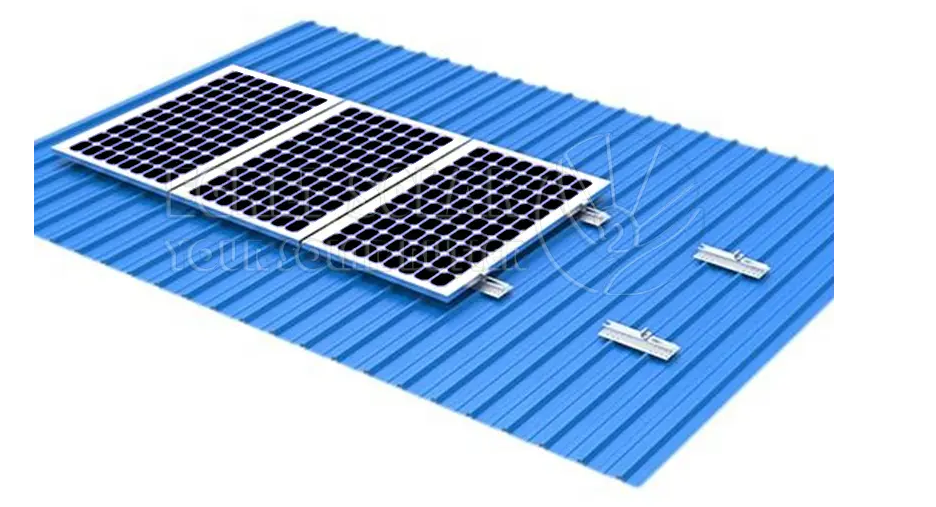- English
- Español
- Português
- русский
- Français
- 日本語
- Deutsch
- tiếng Việt
- Italiano
- Nederlands
- ภาษาไทย
- Polski
- 한국어
- Svenska
- magyar
- Malay
- বাংলা ভাষার
- Dansk
- Suomi
- हिन्दी
- Pilipino
- Türkçe
- Gaeilge
- العربية
- Indonesia
- Norsk
- تمل
- český
- ελληνικά
- український
- Javanese
- فارسی
- தமிழ்
- తెలుగు
- नेपाली
- Burmese
- български
- ລາວ
- Latine
- Қазақша
- Euskal
- Azərbaycan
- Slovenský jazyk
- Македонски
- Lietuvos
- Eesti Keel
- Română
- Slovenski
- मराठी
- Srpski језик
What finally convinced me to choose a Solar Roof Mounting System for homes and shops?
Last autumn I was on the roof with a tape measure in my hoodie pocket and a cup of coffee going cold on the ridge; the goal was simple—add panels without inviting leaks. My place has a corrugated metal sheet roof, the neighbor’s is tile, and our installer kept repeating “use the right clamps” like a warning. I began comparing kits by how they treat the roof first and the panels second. The ones that made sense matched each profile and kept the water path intact; the set I trusted came from Egret Solar because the brackets met the roof instead of forcing the roof to meet the bracket. That project taught me a quiet truth: picking a Solar Roof Mounting System is about dry ceilings, clean installs, and hardware that doesn’t pick a fight with your home.
Who needs this if my roof is metal, tile, or asphalt shingle?
- Metal sheet roofs: Standing seam, trapezoidal, or corrugated profiles benefit from non-penetrating or minimal-penetration clamps that grip seams or ribs without crushing them.
- Tile roofs: Hooks that sit under the tiles (not through them) keep water paths intact; height-adjustable bases help level uneven runs.
- Asphalt shingles: Flashings with butyl or EPDM gaskets, plus stainless lag bolts into rafters, make a tidy, dry mount.
- Commercial low-slope retrofits: Tilt frames improve yield where parapets shade modules; wind deflectors reduce uplift.
How do I avoid roof leaks during and after installation?
- I match the anchor to the roof’s water path. On metal sheets, seam or rib clamps avoid piercing; where penetrations are needed, I use pre-formed gaskets and compatible sealants.
- On tile, I lift tiles carefully, place the hook on the batten/rafter, then restore tile overlap; flashing sits under the upper tile courses.
- I check thermal movement: slotted holes and isolation pads let the roof and rail expand differently without stressing fasteners.
Which clamps and anchors actually make sense for common roof profiles?
| Roof Type | Mount Style | Typical Hardware | Waterproofing Approach | What I Watch For |
|---|---|---|---|---|
| Standing seam metal | Rail or rail-less, flush | Set-screw seam clamps (no penetration) | No holes; protect paint with isolation pads | Clamp model must match seam geometry and thickness |
| Trapezoidal/corrugated metal | Rail or mini-rail | Crest-fix brackets with EPDM gaskets | Butyl/EPDM under bracket; crest-only fasten | Fastener length, sheet gauge, purlin location |
| Clay/concrete tile | Rail, flush or low tilt | Under-tile hooks, adjustable bases | Restore tile overlap; use formable flashing | Tile grinding only if required; preserve water course |
| Asphalt shingle | Rail or rail-less | Flashed L-feet with stainless lag screws | Flashing under upper shingle courses | Hit rafters; use butyl and correct torque |
Why do materials and certifications matter when the roof faces sun, salt, and hail?
- Materials: Aluminum (e.g., AL6005-T5) for rails and brackets keeps weight down; stainless steel (e.g., SUS304/316) handles bolts and clamps for corrosion resistance.
- Coatings: Anodized aluminum and UV-stable gaskets survive hot-cold cycles without chalking or cracking.
- Verification: Third-party testing (commonly seen from CE, TÜV, SGS, or regional standards) helps me document uplift, slip, and grounding performance for inspectors and insurers.
What changed for installation time when I used higher preassembly?
- Pre-cut rails, integrated bonding, and click-in clamps cut my roof time by a third on average.
- On metal sheet roofs, profile-specific clamps meant no on-site rework—no drilling new holes or filing misfits.
- Fewer loose parts = fewer drops, fewer trips to the ground, cleaner QA photos.
When do I pick tilt frames instead of flush mounting?
- Shading and parapets: Low, even tilt can clear small shadows and reduce soiling.
- Latitude and winter production: In snow regions, tilt improves shedding and winter yield.
- Heat management: Extra rear clearance improves airflow, trimming cell temperature and boosting output.
How do I compare cost, labor, and performance without a spreadsheet headache?
| Option | Parts Count | Roof Touch Points | Labor Feel | Performance Notes | Typical Use Case |
|---|---|---|---|---|---|
| Rail + clamps | Moderate | Few, well-defined | Fast with preassembly | Great cable mgmt & alignment | Most residential and light commercial |
| Mini-rail on metal | Low-moderate | Many small brackets | Very quick on long runs | Lightweight; watch wind zones | Trapezoidal/corrugated sheets |
| Tilt frames | Higher | More anchors | Extra steps for bracing | Better winter yield, cooling | Low-slope or shaded edges |
Do custom pieces help or just add cost?
Custom doesn’t mean complicated. On tricky ridges and valleys, I’ve used made-to-fit plates and transition pieces that actually reduced time. With brands like Egret Solar, the custom work usually came as a sensible tweak: a clamp jaw for a rare seam, a longer L-foot to span soft decking, or a gasket that matched an old corrugation. Payoff: fewer penetrations and cleaner load paths.
What keeps modules stable against wind and snow without overbuilding?
- Match the project’s wind speed and exposure category; do not copy a neighbor’s layout.
- Use structural spans within rail specs; add mid-supports if snow loads demand.
- Edge clamps and end caps reduce uplift; integrated bonding keeps inspections smooth.
How do I plan maintenance so the roof warranty stays intact?
- I leave clear walkways every two module rows for safe access.
- I photograph every anchor and label rails by string; that way service techs don’t pry randomly.
- I keep a small kit: spare mid-clamps, end-clamps, and gasket patches rated for the roof material.
What about trust if I am shipping projects abroad or building a portfolio?
For cross-border work, documented material analysis and widely recognized test reports help approvals move faster. Systems I’ve used from suppliers like Egret Solar came with orderly paperwork and global references—useful when partners are in Europe, North America, Türkiye, Brazil, and beyond.
Could one kit handle framed and frameless modules without fuss?
Yes—provided the clamp pads and jaw depth suit both frame styles. I’ve mounted framed modules flush to the roof and used glass-glass frameless modules on tilt frames with matching pads to spread point loads and protect coatings.
Where do I start if I want convenience, economy, and safety in one plan?
- Confirm roof type and profile; take measurements and a few high-angle photos.
- Pick anchors that respect the water path; prefer non-penetrating on standing seams.
- Choose rails or mini-rails that hit your wind/snow numbers without overspending.
- Use preassembled parts where possible; it’s the easiest way to save labor.
- Keep a maintenance lane and label strings for future you (or your installer).
Would you like a quick bill of materials checklist before you buy?
- Profile-matched clamps or hooks (with gaskets/pads)
- Rails or mini-rails with splices and end caps
- Mid-clamps and end-clamps sized to module thickness
- L-feet or bases, flashing (where required), stainless fasteners
- Grounding lugs, bonding jumpers, wire clips, conduit saddles
Ready to talk about your roof and timeline?
If you want a practical plan that fits your roof—metal sheet, tile, or shingle—and keeps installers off buckets of sealant, I’m happy to walk you through clamp choices, tilt frames, and documentation. Brands like Egret Solar offer flexible kits with high preassembly, corrosion-resistant aluminum and stainless hardware, and leak-smart details that made my installs smoother. If you’re comparing options for a commercial retrofit or a home upgrade, contact us with your roof profile, city, and target system size. I’ll send a lean bill of materials, a draft layout, and a clear install sequence—so your Solar Roof Mounting System goes up fast, stays dry, and looks clean. Let’s get your questions answered—contact us today.





